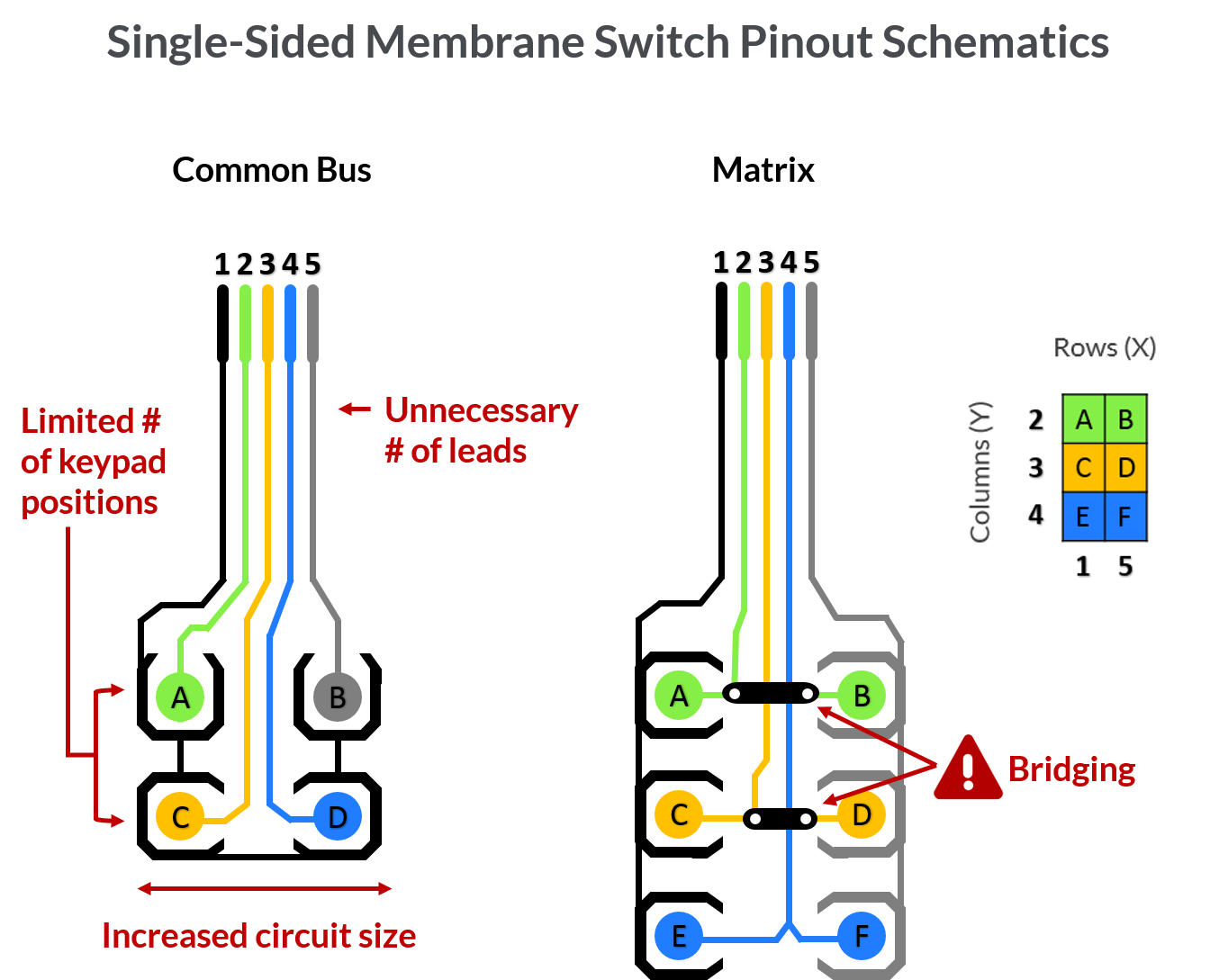How Membrane Layer Switches Over Contribute to the Durability of Electronic Control Panels
Membrane layer switches play an important duty in boosting the durability of digital control panels, largely with their multi-layered building which supplies reliable security versus ecological elements such as dampness and dust. The absence of relocating parts significantly reduces the possibility of mechanical failings, making membrane layer switches perfect for demanding applications.
Interpretation of Membrane Layer Switches

Membrane buttons are made to be thin and lightweight, making them appropriate for applications where area is restricted. They can be made in various shapes, sizes, and colors, using versatility in layout that meets aesthetic and functional demands. Furthermore, membrane layer switches can integrate different modern technologies, such as tactile feedback and LED indicators, boosting user experience.
Due to their construction, membrane switches are frequently resistant to dirt, moisture, and general wear, contributing to their resilience in demanding atmospheres. Their seamless layout not only facilitates very easy cleansing yet additionally reduces the risk of mechanical failure, making them a favored choice for manufacturers seeking trusted interface in their electronic control panels.
Protection Versus Ecological Aspects
The layout of membrane layer switches over naturally offers a degree of defense versus numerous environmental variables, which is essential for preserving capability in tough problems - Membrane Switch. These switches are normally built with layers of flexible products that shield internal parts from wetness, dust, and impurities. By encapsulating the circuitry, membrane switches decrease the danger of short circuits and deterioration, which can dramatically hinder performance
Moreover, the usage of robust adhesives and sealers during manufacturing boosts their resistance to ecological challenges. Membrane layer switches can sustain exposure to chemicals and solvents, making them suitable for sectors such as food handling and health care, where hygiene and sanitation are vital. Their seamless surface design additionally avoids the buildup of dirt and microorganisms, promoting simpler cleansing and maintenance.
Temperature level fluctuations are an additional environmental concern, and membrane layer buttons are engineered to work effectively throughout a broad array of temperatures (Membrane Switch). This versatility ensures that control panels stay functional in different setups, from industrial atmospheres to customer electronic devices
Influence on Customer Interaction
User communication with digital control panels is substantially influenced by the style and performance of membrane layer buttons. These buttons offer a tactile interface that improves the overall customer experience, permitting intuitive navigating and control. Their responsive nature makes sure that customers obtain immediate feedback upon activation, which is important for jobs needing accuracy and performance.
Moreover, the smooth surface of membrane switches helps with simple cleansing and upkeep, advertising individual self-confidence in the dependability of the user interface. This sanitation is specifically essential in settings where health is extremely important, such as medical or food handling settings. Furthermore, the small and lightweight style of membrane switches over contributes to the visual allure of control board, motivating individual interaction through a contemporary and sleek look.
Furthermore, the integration of visual aspects, such as published icons and backlighting, assists users swiftly determine functions, lowering the discovering contour connected with new equipment. As a result, users can operate devices better, causing boosted performance and satisfaction. In recap, membrane switches play an essential function in improving user communication by integrating functionality, looks, and simplicity of usage, eventually causing improved functional effectiveness.
Layout Versatility and Personalization
Design flexibility and modification are vital aspects of membrane layer switches, enabling suppliers to customize electronic control board to specific applications and individual needs. This flexibility allows for the assimilation of various style elements, such as colors, graphics, and textures, which can improve the aesthetic charm and user interaction of the control board.
Membrane buttons can be tailored in size and form, suiting a wide variety of gadgets and applications, from commercial equipment to consumer electronics. This convenience guarantees that suppliers can produce instinctive user interfaces that align with individual assumptions and functional requirements. Furthermore, the capacity to incorporate distinct functions such as backlighting read what he said or responsive responses better improves usability, allowing for a much more interactive experience.
Additionally, index the manufacturing procedure for membrane changes sustains the fast prototyping of layouts, making it possible for manufacturers to repeat and refine their concepts rapidly. This ability not only speeds up the advancement timeline but additionally makes sure that the end product fulfills details functional and aesthetic criteria.

Cost-Effectiveness and Longevity
Cost-effectiveness and long life are significant benefits of membrane layer switches, making them an appealing choice for producers and end-users alike. These switches are usually cheaper to produce than traditional mechanical buttons, mostly because of their streamlined manufacturing processes and the decreased variety of elements needed. This price benefit expands not only to initial manufacturing however also to long-term operational expenditures, as membrane buttons usually need less upkeep and have a reduced failure price.
Additionally, the durability of membrane layer changes adds to their total worth. Constructed from sturdy materials, they are immune to ecological factors such as dampness, dust, and chemicals, which can bring about early wear in other button types. The lack of moving components reduces mechanical failing, enabling membrane changes to keep capability over prolonged periods.
This durability is specifically useful in applications calling for constant performance under requiring problems, such as medical tools and industrial devices. Inevitably, the combination of cost-effectiveness and durability makes membrane layer switches a financially viable option for suppliers, providing reliable options that withstand the test of time while maximizing financial considerations.
Final Thought
To conclude, membrane layer buttons considerably improve the longevity of electronic control panels with their durable construction and protective functions. By successfully securing wiring from environmental risks and decreasing the threat of mechanical failure, these switches guarantee constant efficiency popular applications. The seamless design promotes hygiene my response and ease of maintenance, while personalization alternatives enable tailored services for different requirements. Generally, membrane layer changes represent a trusted and cost-effective selection for improving the durability and functionality of digital control systems.